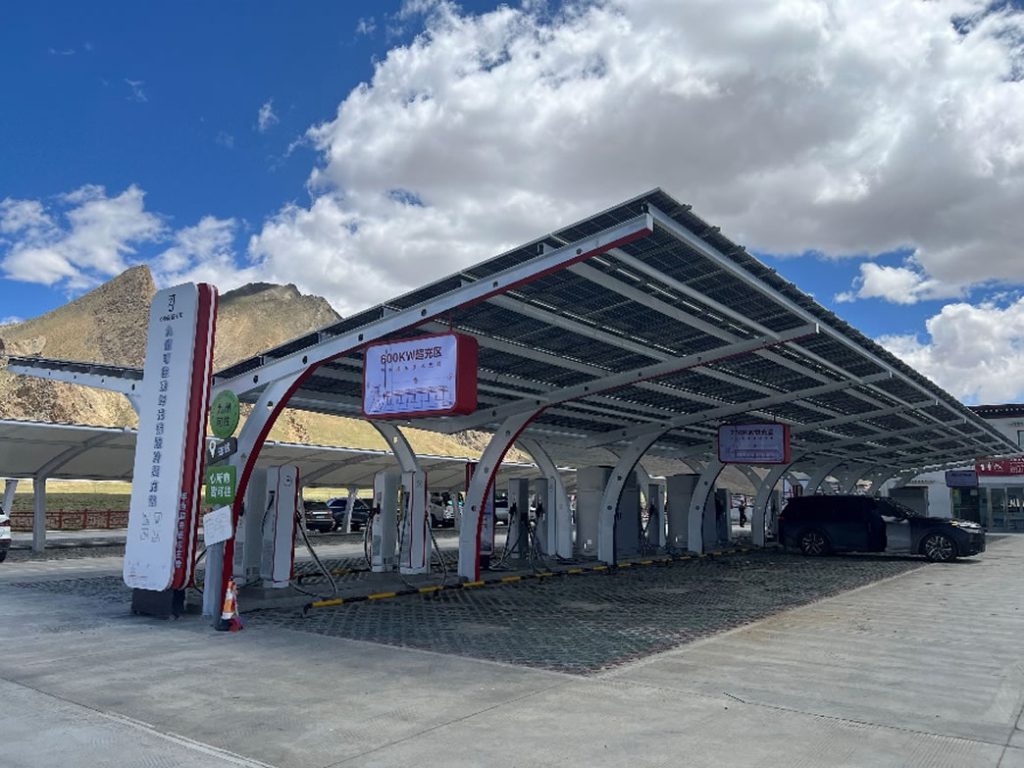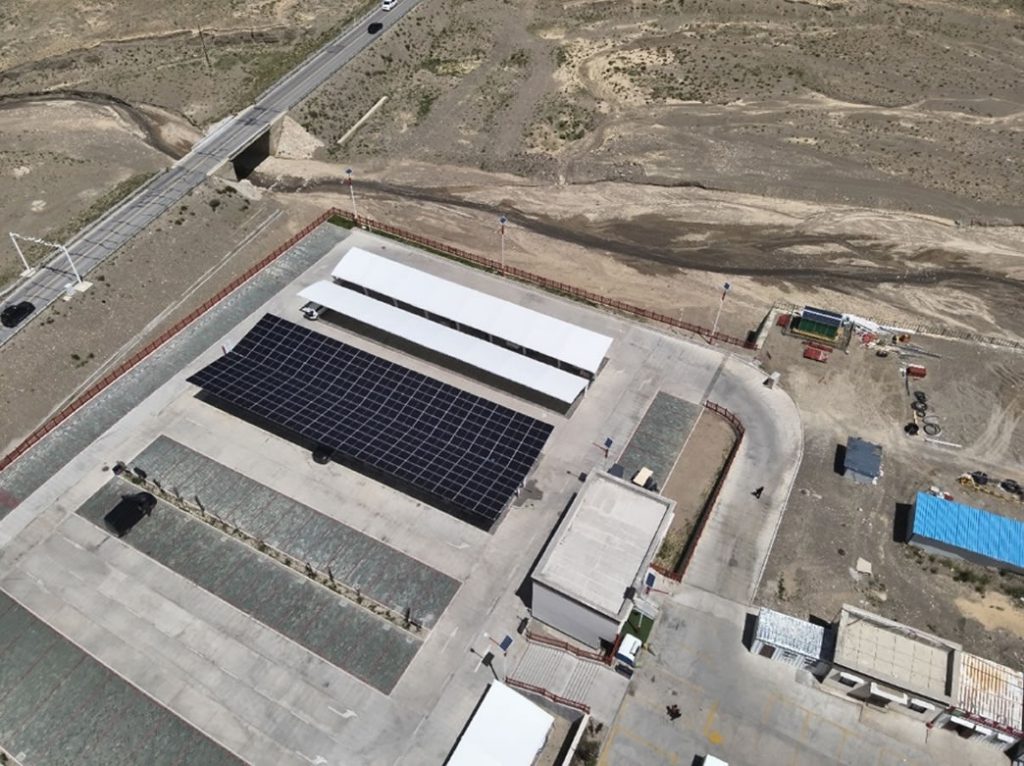AIKO N-Type ABC Modules Power the World’s Highest Solar-Powered Supercharging Station on Everest
September 10th, 2024
Düsseldorf, 10. September 2024 – AIKO has successfully powered the world’s highest solar-powered supercharging station, located 4,300 meters above sea level in the Everest National Park. This supercharging station integrates AIKO’s N-Type ABC modules with Huawei Digital Power’s liquid-cooled technology, setting a new standard for green energy solutions in extreme environments.
The Everest supercharging station is part of the “Sichuan-Tibet Highway Supercharging Green Corridor” project along National Route 318. This initiative supports over a million tourists each year, tackling range anxiety for electric vehicle (EV) owners who venture into this high-altitude region known for its dramatic landscapes but limited charging infrastructure.

The challenges of this terrain are significant. Harsh weather—ranging from hailstorms and blizzards to powerful winds—and high levels of solar radiation make the environment unpredictable. Additionally, the altitude, severe cold, and snow loads pose serious risks to any solar equipment. AIKO’s N-Type ABC modules, known for their resistance to cracking, high efficiency, and strong performance in both high UV exposure and cold temperatures, were chosen to meet these demands.
How AIKO’s N-Type ABC modules tackle the extreme conditions:
- Unpredictable Climate: Able to withstand extreme temperature difference (△40℃) which always accompanied with large hail. ABC passed 4x IEC HF Reliability Test and Hail Test and successfully obtained PVEL 50mm qualification.
- High Altitude and UV Exposure: Area with high UV exposure will cause BOM in module to degrade easily, especially the encapsulant. ABC passed 4x IEC UV Reliability Test.
- Durability: Micro-crack resistance feature allows our module to overcome logistical and installation challenges in rugged environments, such as winds blow and snow loads. ABC passed DML+TC Reliability Test with excellence result.
- Hotspot Effect: Partial shading optimisation feature allows our module to tackle if there is any occlusion on the module’s surface. ABC module obtained Grade A in TÜV Rheinland 2PfG 2926-01.23 Standard.
- Insulation Properties: As the increase of altitude, the air density and atmospheric pressure will be lower and lower, so the insulating properties in module will be weaken. ABC passed 1.5x IEC High Voltage Test.
- High Off-grid Power Station Advantage: As the area is limited, with ABC module low first year 1% and 0.35% year by year degradation rate and high module conversion efficiency per area m2, more electricity (higher 6~10%) can be generated in areas where there is no electricity.
- Aesthetic Black: Full black appearance as all the electrodes is located at the rear-side.
With all these mentioned advantages, ABC module brings higher power, higher return and ultra-safety to their customer value.
This project exemplifies AIKO’s mission to bring clean energy to some of the most remote and challenging places on Earth. By generating 236,800 kWh of clean energy annually, the Everest station helps reduce the carbon footprint of travel through this iconic region, furthering AIKO’s vision of a zero-carbon society where development and environmental protection coexist.
Aligned with the spirit of Everest, this project symbolizes AIKO’s ambition to explore the limits of clean energy innovation. As climbers push their physical and technical limits to reach the summit, AIKO strives to lead the energy industry in providing renewable solutions for the most extreme conditions.
This effort is not just about technology; it’s about a broader mission of sustainability. AIKO envisions a future where clean energy infrastructure integrates seamlessly with natural environments, enabling renewable energy to reach even the world’s most pristine and remote areas.












